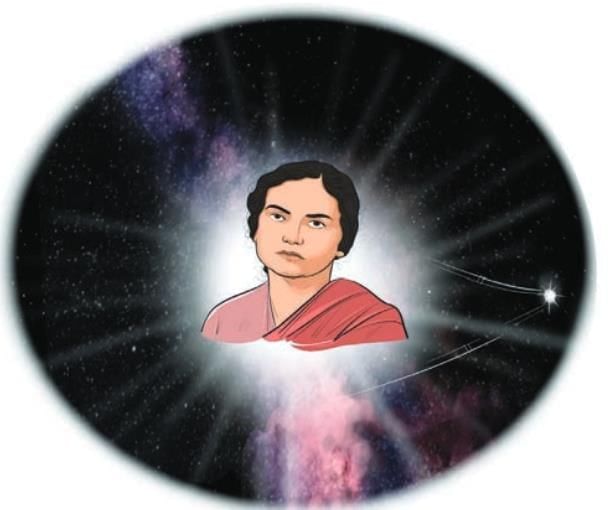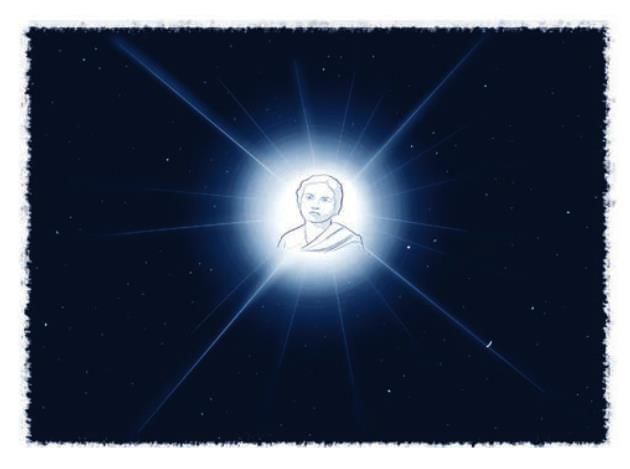Detailed Summary: Bibha Chowdhuri: The Beam of Light that Lit the Path for Women in Indian Science | Chapter Notes For Class 8 PDF Download
| Table of contents |

|
| Key Points of the Story |

|
| Detailed Summary |

|
| Theme |

|
| Message |

|
| Difficult Words |

|
Key Points of the Story
- In India, women are making significant achievements in science, technology, engineering, and mathematics (STEM).
- One of the first Indian women to work in science was Bibha Chowdhuri, born in 1913 in Kolkata.
- At a time when Indian women struggled to seek knowledge and equitable access to education, Bibha Chowdhuri emerged as a rare beam of light.
- She faced many challenges but succeeded in high-energy particle physics.
- In 1945, she was given the opportunity to study further at the University of Manchester in England. She worked under the guidance of Patrick M.S. Blackett, a famous physicist who later won the Nobel Prize.
- Her Ph.D. thesis on cosmic rays received wide praise, and newspapers called her "India's New Woman Scientist".
- She discovered pi-mesons, tiny subatomic particles, and was nominated for a Nobel Prize by Erwin Schrödinger in 1950.
- After returning to India in 1949, she became the first woman faculty member at the Tata Institute of Fundamental Research.
- Throughout her life, Bibha worked quietly but received little recognition during her lifetime.
- She passed away in 1991, her name nearly forgotten.
- In 2019, a star was named after her to honour her contributions to science.
- Bibha’s story inspires many young women to pursue their dreams and break barriers in science.
Detailed Summary
Bibha Chowdhuri was born in 1913 in Kolkata, during a time when Indian women were discouraged from pursuing education, especially in science. But Bibha was different. From an early age, she showed a strong desire to learn and refused to follow the traditional path expected of women then. Her determination to study science was rare and courageous, especially because very few women were in scientific fields.

She studied at the Bose Institute, one of India’s leading scientific institutions. There, she became the first Indian woman to excel in high-energy particle physics. Her journey was difficult because the scientific world was dominated by men, but Bibha did not give up. She chipped away at the wall of exclusion, slowly gaining respect through her hard work and intelligence.
In 1945, she got an opportunity to study further at the University of Manchester in England. She worked under the guidance of Patrick M.S. Blackett, a renowned physicist who later won the Nobel Prize. Bibha’s research focused on cosmic rays, high-energy particles from space that strike the Earth’s atmosphere. Her Ph.D. thesis on cosmic rays received wide praise. Newspapers called her “India’s New Woman Scientist” and admired her skill in understanding cosmic rays.
Despite her talent, Bibha’s contributions often went unrecognised. During a time of many great scientific discoveries, Bibha worked quietly in the background. One of her most important achievements was the discovery of pi-mesons, tiny subatomic particles found inside atoms. This was a breakthrough in physics. In 1950, Bibha was nominated for a Nobel Prize by the famous scientist Erwin Schrödinger. Although she didn’t win, the nomination showed her brilliance.
In 1949, Bibha returned to India. She was invited by Homi J. Bhabha, the father of India’s nuclear programme, to join the Tata Institute of Fundamental Research (TIFR). She became the first woman faculty member at TIFR. Her research continued at important institutions like the Physical Research Laboratory in Ahmedabad and the Saha Institute of Nuclear Physics in Kolkata. She worked with India’s leading scientists, including Vikram Sarabhai, and conducted experiments deep underground in the Kolar Gold Mines to study cosmic rays.
Yet, throughout her life, Bibha worked in silence. She never received major awards. She passed away in 1991, her name almost forgotten.
Years later, her efforts were finally recognised. In 2019, the International Astronomical Union named a star in the Leo constellation “Bibha”, meaning “beam of light”. This was a beautiful tribute to a woman who was a guiding light for Indian science, even if many failed to notice it during her lifetime.

In recent years, Indian women scientists have made huge progress, building on Bibha’s legacy. At ISRO, women like Dr Ritu Karidhal Srivastava have led key missions, demonstrating the advancements made by women in Indian science. Over 50 women contributed to Chandrayaan-3, showing that women are now leaders in space science. They design spacecraft, build autonomous systems, and manage mission control — achievements unimaginable in Bibha’s time.
Bibha Chowdhuri’s story reminds us how far we have come from a time when women had no place in science to the present, when they lead space missions. She was the first spark in a long chain of achievements, and though she lived in the shadows, she helped light the path for others.
Theme
- Breaking gender barriers: Bibha Chowdhuri’s life shows how women can succeed in fields where they are often discouraged, such as science and technology.
- Persistence and quiet strength: She worked without fame or rewards but kept going because of her love for science.
- From invisibility to recognition: Though ignored in her lifetime, her contribution was finally honoured when a star was named after her.
- Inspiration for future generations: Bibha’s story inspires girls and women to pursue their dreams, no matter how difficult the path may be.
Message
- Talent and hard work will shine even if the world doesn’t recognise them immediately.
- Pioneers often go unnoticed, but they lay the foundation for future success.
- Women belong in every field, including science, and can lead just as well as men.
- Progress in society depends on recognising and encouraging every person’s potential, regardless of gender.
Difficult Words
- Trailblazer: A person who is the first to do something and opens the way for others.
- Pioneers: People who are among the first to explore or develop a new area of knowledge or activity.
- Equitable: Fair and just, ensuring everyone has the same rights and opportunities.
- Persistence: Continuing to do something despite difficulties or challenges.
- Exclusion: The act of not allowing someone to be part of a group or activity.
- Recognition: Acknowledgement of someone's achievements or importance.
- Contribution: Something that is given or added to a cause or effort.
- Legacy: Something handed down from one generation to the next, often relating to achievements or memories.
- Subatomic: Smaller than an atom; refers to particles that make up atoms.
- Mentorship: Guidance provided by a more experienced person to a less experienced person.
- Innovative: Introducing new ideas or methods; creative and original.
- Acclaim: Public praise for someone’s achievements.
- Illuminate: To light up; to make something clear or easy to understand.
- Tenacity: The quality of being determined and not giving up easily.
- Cosmic: Related to the universe or outer space.
FAQs on Detailed Summary: Bibha Chowdhuri: The Beam of Light that Lit the Path for Women in Indian Science - Chapter Notes For Class 8
| 1. Who was Bibha Chowdhuri and what contributions did she make to Indian science? |  |
| 2. What challenges did Bibha Chowdhuri face in her career as a woman scientist? |  |
| 3. How did Bibha Chowdhuri influence the role of women in science in India? |  |
| 4. What is the main theme of Bibha Chowdhuri's story in the context of women in science? |  |
| 5. Why is it important to study the contributions of scientists like Bibha Chowdhuri? |  |















